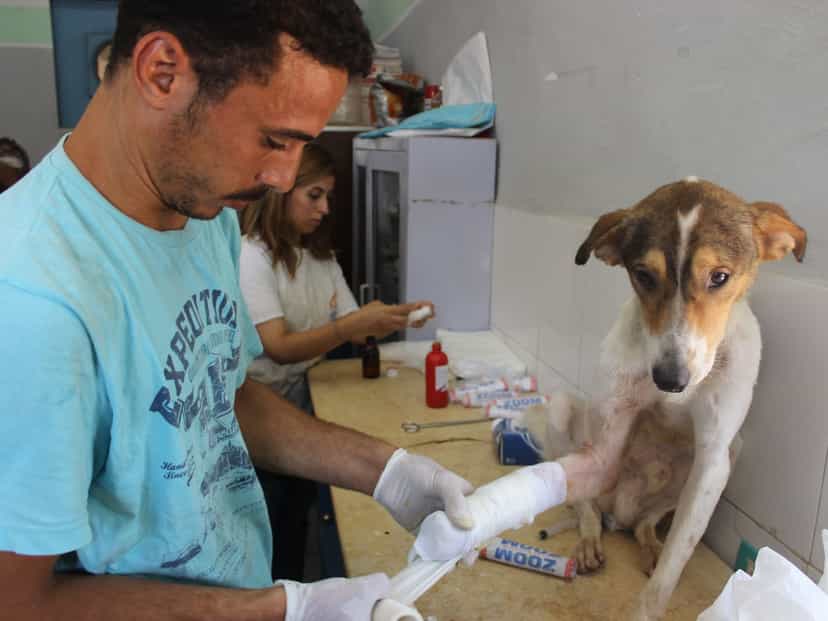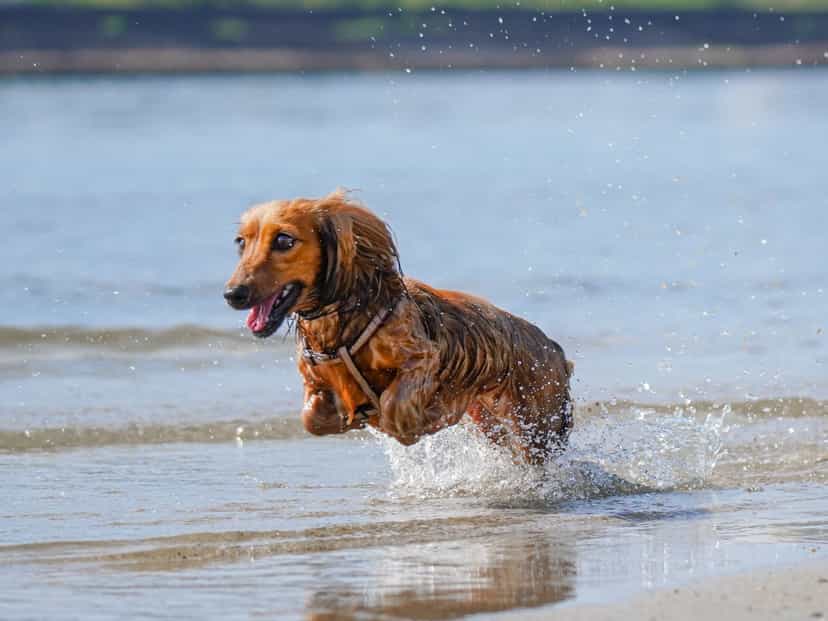
Social Media seems rife with story after story of dog theft at the moment. What do you need to know about the risks of dog theft.
It’s such a hot topic at the moment and barely a day goes by without seeing a post on social media about the theft of yet another dog or a plea for the return of someone’s fur baby. It saddens me and really does make me fearful of walking my two, even during the daytime. I am not alone in this either as according to a new study, more than three quarters of dog owners are more scared of walking their pet because of the heightened risk that it’ll be stolen. So, what can we do about it and how do we protect ourselves and our dogs without losing the enjoyment of walking our dogs?

DogLost is a national lost and stolen dog service (not for profit), and they run via a network of volunteers. DogLost works to give practical advice to those who have had a dog stolen or that is lost. I reached out to them for some statistics on dog theft and was shocked to learn that DogLost has seen a 170% increase in dogs registered as stolen in 2020 compared to 2019. In 2021 (January, February and part of March), they have had 151 stolen dogs registered with them alone – this figure is up 50% on 2020 figures so sadly dog theft cases aren’t slowing down. With the value of dogs on the increase, some breeds are being sold for as much as £5,000, and with the punishment for getting caught much less severe, I have heard dog theft can now be more profitable than the sale of drugs.
The figures show that dogs are still more at risk in your own back garden than out on a walk as around two thirds of dogs are stolen this way. Then it’s being stolen from outside a shop (unfortunately, owners do still leave their dogs tied up outside shops), then from your car and then finally whilst out on a walk. Statistically, therefore, you are less likely to have your dog stolen whilst you are out walking and so we should still take pleasure from being out and about with our dogs. The overriding message is to remain vigilant at all times.
What were the top stolen breeds in 2020?
Although it goes without saying that any breed, age and sex of dog can be stolen, the top stolen breeds in 2020 were as follows:
- Cocker Spaniel
- Springer Spaniel
- Jack Russell
- French Bulldog
- Labrador

Where are they stolen from?
DogLost stress it is important for owners to realise that dog theft involving aggravated assault whilst out walking is still very low but that it always pays to be aware and alert when you are out.
As your dog is more at risk of being stolen from their own back garden it makes sense to never leave your dog alone in the garden, even if you are just nipping out, regardless of how secure your garden may be. Always keep an eye on your dog whilst they are spending time in the garden and if it is possible to do so, CCTV and motion sensitive lighting is also a deterrent to would be thieves. Fit garden gates with bolts on the top and bottom and secure with a closed shackle padlock. Consider fitting a bell/alarm to the gate so you will hear it if anyone opens it.

Check and make sure that your garden is secure, which includes fences, hedges and gates. Make sure your dog cannot escape and that nobody can pull your dog out. Consider fitting trellis on rear fencing.
It seems unbelievable that it has to be said, but you should never leave your dog tied up outside of shops, regardless of how many times you have done it in the past or how quick you plan to be in the shop. Thieves strike within seconds – DogLost have footage to prove how quickly a dog can be snatched and it really doesn’t matter the age, breed, behaviour of the dog normally – they can and do steal dogs within a minute. Putting it simply, it is just not worth the risk so leave your dogs at home if you can’t take them with you.
Staggeringly, dogs are still left in cars too. In addition to the risk of heatstroke (it really does not take long for a car to get hot!), it is also risky to leave them alone in the car even if the car is locked. It only takes seconds for a window to be smashed; however, many dog thieves are now in possession of car fobs which can and do let them into cars without having to smash windows to grab the dog.
What needs to change / What are DogLost campaigning for?

If a dog thief is caught the matter would be heard in a Magistrate’s Court, although frustratingly most cases don’t even get that far! Whilst the Theft Act 1968 carries a 7-year maximum sentence, this is not achievable in a Magistrate’s Court. Staggeringly, this is because ‘Other’ thefts, which is how our dogs are referred to, carry low punishments based on the replacement value. I am fully behind DogLost when they say that a dog is a sentient being and therefore the act of dog theft should be classified as a crime in its own right. This would result in a greater sentence for the thief.
When a dog is first registered at a veterinary practice, it is not a requirement for them to scan the dog for a microchip. DogLost therefore also wants vets to microchip scan and check the chip details of all dogs when they are first registered at a veterinary practice. As this is not currently carried out, it is possible for dogs to be stolen and then disappear through this loophole, thus making it easy for them to be sold onto unsuspecting families.
This brings us onto the next part of what needs to change. What is also needed is for the general public to be vigilant in where they are buying their dog from. If you are buying an adult dog, ask yourself why. Are they able to prove they are the long-term owner of this dog (such as through photos), can they provide microchip details and/or veterinary statements?
If you are buying a puppy, please ensure you are buying from a registered breeder, hobbyist breeders or even consider adopting from your local rescue. It is still very much the case that dogs are being bred just for money, and this is what is driving up the perceived “value” of dogs and making dog theft even more desirable to thieves.
After you buy a dog of any age, DogLost recommends you register with a veterinary practice and ask them to check the microchip. This should be checked to ensure that not only is the chip is working, but also that the numbers are correct and match the paperwork you are given. The vet also needs to check the microchip isn’t flagged as lost or stolen.
What should I do when I am out with my dog?
If your dog does not have great recall, please keep them on a lead. Ensure your dog is microchipped and that the details are up to date. It is also recommended that your dog’s name is not highly visible so as to prevent thieves calling your dog over, away from you.
If you are walking somewhere new, please do remember new surroundings can be exciting and a little distracting for your dog. As more of us than ever are staycationing with our dogs, do take into account they may not be used to new surroundings and smells, particularly if they are puppies. If you are planning to let them off lead, get them used to their new environment and practice their recall. Always keep them in sight.
You should also never tag your dogs in walks on social media and also ensure any photographs of your furbabies are kept private by changing the privacy settings. Would-be thieves can use these to target your dogs when you are walking, especially if you tend to visit the same places (as so many of us are at the moment).
Also, don’t allow yourself to get distracted on walks – I see so many dogs which are let off their lead to run around whilst their owners are using their mobiles or chatting with friends/other dog walkers, oblivious to the whereabouts of their dogs. It only takes a second for your dog to be snatched.
If a stranger does approach your dog, put it on lead and walk to where there are other people, preferably other dog walkers. It also goes without saying that you shouldn’t give information to people asking about your dog, such as their name, age or cost!
You should never allow your child to walk your dog on their own, always accompany them on walks.
Consider adding extra security to your lead, such as a Carabiner but ensure it has a screw lock. This can be added to a lead, meaning it cannot be unclipped as easily or as quickly.
If you do see suspicious activity, report it immediately to Police via 101!

To summarise
The top tips for keeping your dog safe are:
- Dogs are at most risk in your back garden, ensure your garden is secure and never leave them outside unsupervised. Add extra security if at all possible.
- Never leave your dog outside a shop or in a car, even if you are just nipping in for a couple of minutes, that’s all the time needed for a dog to be stolen.
- When walking your dog, ensure that they have excellent recall and keep them in eyesight at all times.
- Make sure that they are chipped, that the chip is up to date, and that their name is not clearly visible on collars or harnesses. If your dog wears a harness, avoid using your dog’s name on any labels such as those for the Julius K9.
- Use a lead which would be difficult to cut, avoiding retractable leads which have a cord type lead which could be easily cut.
- Consider alternating your dog walking route and time.
- Don’t walk alone in quiet areas with no one else around. If you can, walk with another person or in a populated area.
- If you are approached by a person that attempts to take your dog or acts suspiciously around your dog, report the attempt immediately to the Police via 101.
- BE ALERT, BE AWARE, BE VIGILANT! Keep off your mobile phone and keep an eye on your dog, don’t give would-be thieves the opportunity.
Some further website providing information concerning lost and stolen dogs are:


